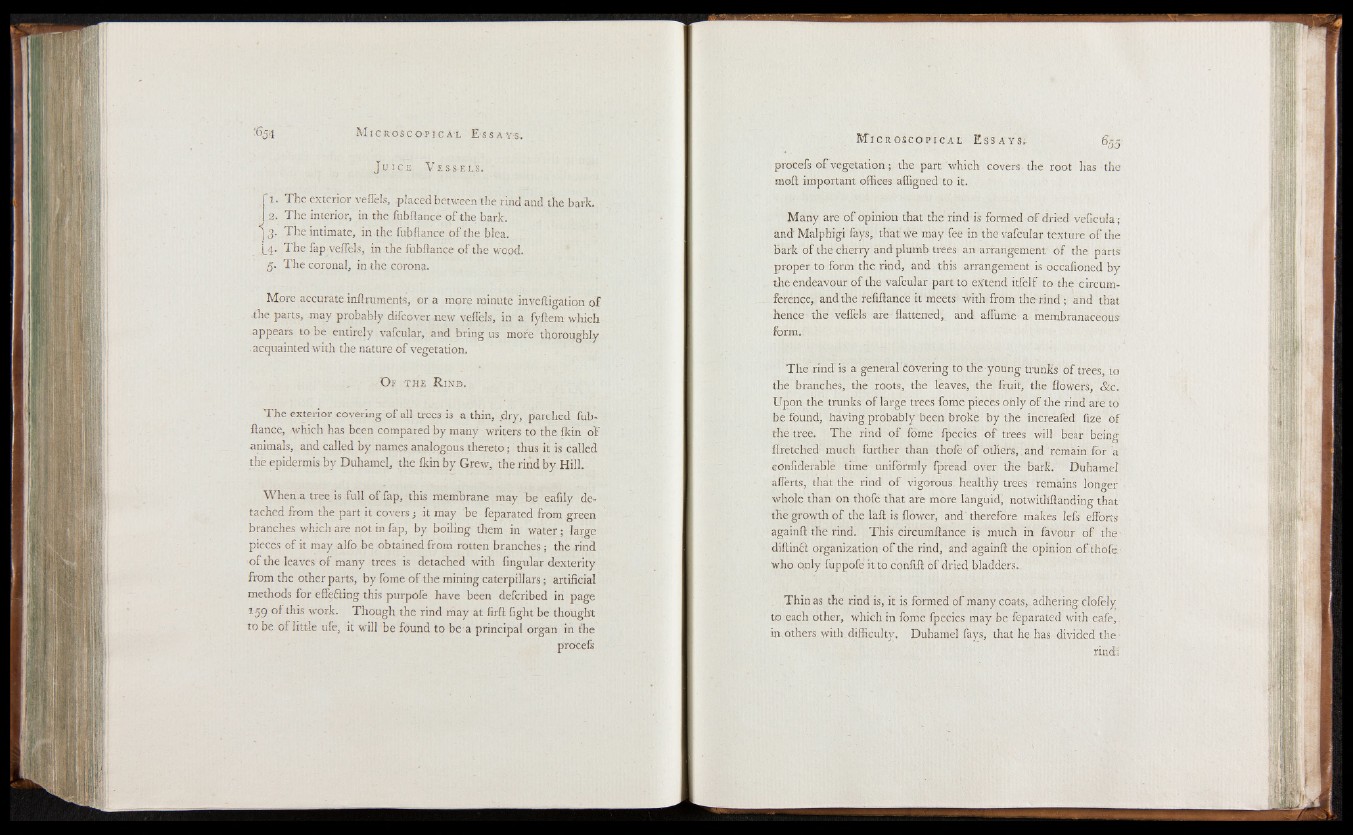
% 1
J uice V es sels.
fx . The exterior veffels, .placed between the rind and the bark.
I 2. The interior, in the fubftance o f the bark.
j 3. The intimate, in.the fubftance o f the blea.
i_4- The fap veffels, in the fubftance of the wood.
5. The coronal, in the corona.
More accurate.inftruments, or a more minute inveftigation of
the parts, .may probably difcover new veffels, in a fyftem which
appears to be entirely vafcular, and bring us more thoroughly
acquainted with the nature o f vegetation.
U f the Rind.
The exterior covering o f all trees is a thin, dry, parched fubftance,
which has been compared by many writers to the flun of
animals, and called by names analogous thereto; thus it is called
the epidermis by Duhamel, the flun by Grew, the rind by Hill.
When a tree is full of fap, this membrane may be eafily detached
from the part it covers; it may be feparated from green
branches which are not in fap, by boiling them in water; large
pieces of it may alfo be obtained from rotten branches; the rind
o f the leaves o f many trees is detached with Angular dexterity
from the other parts, by fome o f the mining caterpillars; artificial
methods for effecting this purpofe have been defcribed in page
159 ° f this work. Though the rind may at firft fight be thought
to be of little ufe, it will be found to be a principal organ in £he
procels
procefs of vegetation; the part which covers the root has the
moft important offices afligned to it.
Many are o f opinion that the rind is formed of dried veficula ;
and' Malphigi fays, that we may fee in the vafcular texture o f the
bark o f the cherry and plumb trees an arrangement of the parts
proper to form the rind, and this arrangement is occafioned by
the endeavour of the vafcular part to extend itfelf to the circumference,
and the refiftance it meets with from the rind ; and that
hence the veffels are flattened, and affume a membranaceous
form.
The rind is a general'covering to the young trunks of trees, to
the branches, the roots, the leaves, the fruit, the flowers, &c.
Upon the trunks of large trees fome pieces only of the rind are to
be found, having probably been broke by the increafed fize of
the tree. The rind o f fome fpecies o f trees will bear being
flretched much further than thofe of others,. and remain for a
eonfiderable time uniformly Ipread over the bark.- Duhamel
afferts, that the rind o f vigorous, healthy trees remains longer
whole than on thofe that are more languid, notwithftanding that
the growth o f the laft is flower, and therefore makes Iefs efforts
againft the rind. This circumftance is much in favour of the-
diftinft organization o f the rind, and againft the opinion ofthofe-
who o.nly fuppofe it to confift of dried bladders..
Thin as the rind is, .it is formed of many coats, adhering clofely
to each other, which in fome fpecies may be feparated with eafe,.
in others with difficulty. Duhamel fays, that he has divided therindi